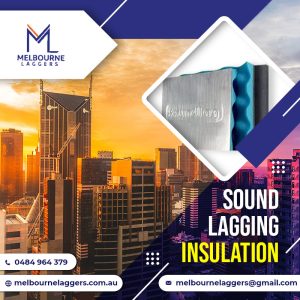Thermal lagging is the reduction of heat transfer (the transfer of thermal energy between objects of differing temperature) between objects and thermal contact or in range of radiative influence. Thermal lagging can be achieved with specially engineered methods or processes as well as with suitable object shapes and materials.
Heat flow is an inevitable consequence of contact between objects of differing temperature. A thermal lagging provides the region of insulation in which thermal conduction is reduced or thermal radiation is reflected rather than absorbed by the lower-temperature body.
Thermal pipe lagging is used to control the temperature of the pipes and the structure as a whole. The heat from the pipes’ outside walls could have a big impact on the room’s temperature. It is also risky to leave an exposed pipe because it could result in burns or other mishaps. Thermal pipe lagging would concentrate on keeping the warmth within the pipes by using the appropriate materials to insulate them.
Why is Thermal Pipe Lagging important?
Melbourne Laggers, Melbourne’s top provider of Thermal Lagging Services, assists industrial and commercial clients in increasing their overall efficiency. In the market, our industrial thermal lagging solutions have proven to be highly popular. We identify the root causes of energy waste and devise strategies to address them. We have listed out the reasons why thermal pipe lagging is important:
- Because of its high conductivity, copper is ideal for transferring hot water in central heating systems, but the pipes can potentially get excessively cold. Pipes can burst when water freezes, ultimately resulting in costly repairs.
- Pipes in cold locations can draw water vapour, which can cause corrosion when it condenses on the surface. It may also encourage dampness within the walls. Insulation keeps this from happening by raising the pipe’s surface temperature and producing a water-vapour barrier.
- Exposed metal piping can reach severe temperatures of hot and cold; insulating them reduces the risk of people injuring themselves if they come into touch with the pipes.
- Soundproofing can also be achieved with insulation. You can sometimes hear water gurgling through pipes or hear mechanical noises coming from them. Adding anything on top of the sound can help mask it.
How does Lagging work?
Copper pipes may be insulated quite cheaply with pipe lagging to reduce the risk of freezing and heat loss. It is a simple task but it is advised that a skilled professional should be hired to do the needful. Our Melbourne-based Thermal Lagging Services team can assist clients in determining and implementing the best thermal insulation solution. We can find efficient items for this purpose thanks to our vast vendor network.
Why do individuals fail to insulate their water pipes while they know how important it is to insulate their walls and lofts? Because the loft and pipes leading to exterior taps are likely to be the coldest, thermal pipe lagging is very important.
Pipe lagging is a flexible elastomeric material wrapped around metal pipes to reduce movement caused by temperature changes. There is more advanced insulation available that can manage both heat and noise transmission. The insulation keeps the temperature in hot/cold water services, chilled water lines, refrigerated pipework, and air-conditioning ducts consistent while also reducing noise from the kitchen, laundry, and bathroom pipes.
For different diameters of pipes, different types of lagging are available in different materials, so get yours measured before you buy. Lagging comes in a variety of thicknesses, so choose the thickest material that your pipes and budget will allow. Lagging is especially crucial on the two metres or so of pipes that go out of the hot water system, as well as any other plumbing that is exposed to the elements. It’s necessary to stop insulating around 30cm away from the flue with gas systems, as the pipes going up to it can freeze.
Materials for pipe lagging
- Polyethylene (flexible plastic foamed insulation)- It is the most commonly used pipe insulation material.
- Mineral/glass wool- This material is thermal, acoustic, and fire-resistant. It is a popular choice because it does not shrink, expand, decay, or burn.
- Flexible elastomeric foam- This rubber-like substance is very resistant to water vapour passage and has excellent thermal properties, even at modest thicknesses.
- Rigid foam- It is typically seen in industrial buildings and is used to protect extremely big pipes. For home use, it is not commonly accessible commercially.
- Silica aerogel- At this time, no one makes aerogel insulation specifically for pipes, but it is expected that it will change in the near future. The substance, which is exclusively available as a paste, has the lowest heat conductivity of any commercially made insulator.
- Tape is wrapped around pipes and can be composed of foil, plastic, or cork.
Our Thermal Lagging Experts take great care in every phase of the project to ensure that the quality and consistency of the outcomes are maintained. Our Melbourne Thermal Lagging Services are designed and implemented to ensure long-term results. We have all of the necessary equipment on hand to complete the task efficiently and effectively. Our invoicing method is consistent and straightforward, which our clients appreciate.




